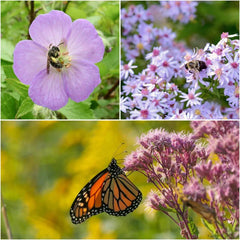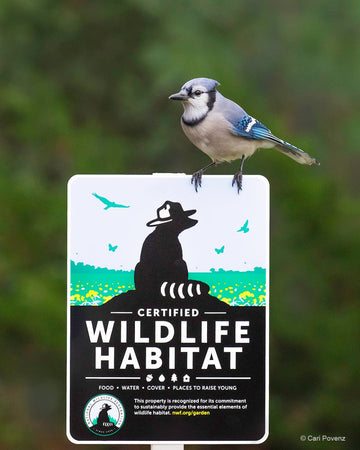Beyond "Butterflies in Your Stomach": A Deeper Look at Love & Lepidoptera

Butterflies in My Stomach - Part 1: What Do Butterflies Mean to Us?
This is a series is devoted to exploring butterflies as symbols in the collective psyche; as messengers from other worlds; as beings with whom humans throughout history have shared a vibrant, living spiritual connection—all that which science clunk-ily refers to as “aesthetic and cultural value.” Each month, we’ll cover a unique instantiation of butterflies in culture, tracing themes and asking questions about how humanity can embrace and repair our relationship to these magnificent creatures, and to the world we all share.
Find Part 2 below!
…
Last time we gathered to gaze at the monarch butterfly as it flitted about Mexico’s Day of the Dead festivities, ferrying spirits across the boundary between this world and the next. Now, we’re picking up the series again with a special Valentines-inspired musing on butterflies in relation to love.
Pssst! You can download all the images on this blog post to use as Valentine’s cards for your special someone or for your child’s classroom!
Throughout history, butterflies have appeared alongside humanity’s cultural expressions and personal experiences of love. They are drawn into the Anthropocene as symbols for transformation, tenderness, and erotic whimsy. At times heralding love’s divine influence, other times conveying its capricious nature, butterflies alight upon the entire spectrum of human emotion with regard to love.

This wide-ranging and long-standing affinity is epitomized in Antione-Denis Chaudet’s marble statuette, entitled Love Playing with a Butterfly, which depicts a timeless moment of mutual curiosity between a butterfly and Eros, the Greek God of love. Perhaps the butterfly is attracted to the nectar of romance, as it is to the nectar of the rose, or perhaps the human-in-love simply courts the creature’s presence. Regardless of the nature of the symbiosis, it is clear that humanity’s notions of romance and butterflies are thoroughly and playfully intertwined.

Today, nowhere is this connection more visible than in the popular idiom, “butterflies in my stomach.” First penned in 1908 by Florence Converse, the phrase has become a central guidepost in our cultural mapping of what love is and how it ought to feel. These days, it’s the butterflies that distinguish a good partner on paper from a true love match. Also known as “that spark” or “that feeling,” “the butterflies” is the anglophone name for that indispensable, ineffable sensation that lets us know we are in love. To truly appreciate the power of this idiom, and its implications for our relation to Lepidoptera, it is worth exploring the word butterfly’s linguistic origins.
The etymology of the word butterfly in English, Spanish, and French illustrates a beautiful variety of cultural perceptions regarding these delicate creatures. The English “butterfly” can trace roots to the Old English “buttorfleoge,” which, despite being decidedly more fun to say, means the exact same thing: butter + fly. There are three theories as to the word’s origin. The first is that Anglo-Saxons distinguished butterflies from other tiny flying things (dragonflies, mayflies, etc.) by virtue of their butter-colored wings. The most common lepidoptera in the region at the time was the yellow brimstone butterfly, with leaf-shaped wings of pale yellow.

Others contend that “butter” refers to the butterflies’ enjoyment of dairy products. Is that not sweet and a little mischievous? Imagine, amidst the green and pleasant pastures of Old England, coming across the sight of four or five butterflies flitting about, delicately dipping their proboscises into a wide bowl of fresh cow’s milk; imagine your smile at the scene. Many humans would have had to experience something like that in their lifetimes, perhaps many times over, for the “butter” designation to cement culturally. The beautiful insight here is that butterflies would never have developed a taste for butter or milk without those very dairy farmers who would come to name them. Thus, the name evolved out of companionship between species – that is to say, out of relation.
The final origin theory posits that the word butterfly is a fluid reversal of “flutter-by,” a term that attentively describes the creature’s graceful yet unpredictable flight across the human gaze. I would love to watch the word flip and flap in usage between butterfly and flutterby throughout generations, slowly metamorphosing into the dominant form. The three potential etymologies merge to produce a picture of a culture naming a creature based on long-term lineages of reverence and companionship.

I won’t go into the French and Spanish etymologies as deeply, but they too reveal fascinating insights into how the two cultures perceived butterflies. The Spanish mariposa is understood to be a compression of the phrase “Santa Maria posa,” which is to say, Saint Mary lays down (rests/alights). It was likely a prayerful remark before it was a noun, uttered in observation of the sacred moment of a butterflies’ pause: wings opening and closing ever so often, senses buried deep in the ecstasy of pollen. Mary rests: the divine feminine takes refuge in a moment of worldly pleasure. This image of sovereign feminine delight is alive today in the modern Spanish verb mariposear, which means to flirt, flit about, or indulge in playful connections with multiple companions.

The French papillon derives, less dramatically, from the Latin papilio and maintains a strong throughline with the Proto-Indo-European root *ple- ‘to swim, wander, float.’ Papillon is a prime example of a dominant linguistic pattern seen in butterfly names across diverse language families: the reiteration of the letters b, p, l and f. Butterfly, papillon, farfala (Italian), pelelehua (Hawaiian), labalaba (Yoruba)—the list goes on. Through the recurrence of these specific consonants, contends anthropologist William Beeman, “one can almost hear the gentle rustle of butterfly wings and see their repetitive motion.” Cultures around the world have constructed names for butterflies that visually and auditorily gesture at the essence of the real thing. This is not a commonplace linguistic phenomenon: it is rather a labor of love.
In his article, The Elusive Butterfly, Iconicity in Language, Beeman draws attention to another exceptional phenomenon characterizing the term butterfly and its various translations. “The Butterfly Problem,” as it is known amongst linguists, refers to the fact that the word for butterfly is different in every European language, even amongst those very closely related. Butterfly, mariposa, papillon, farfala (Italian), borbuleta (Portuguese)—none of these words share a common root or recognizable relation.
Butterfly terms defy the linguistic principle of the regularity of cognate borrowing, which holds that within the same linguistic family a large proportion of words “will be recognizably related due to the derivation of that material from a common linguistic ancestor.” The word for cat, for example, is shared amongst at least twelve European languages: gato, chat, katze, kot, etc. all clearly derive from the Late Latin cattus. The principle of cognate borrowing holds for a vast majority of animals, as well as clouds, flowers, mountains, trees, birds, and most other wondrous entities. And if the rule is broken, it is typically broken by just one or two cultures, not each one consecutively. Yet throughout Europe, time and time again, early cultures refused to use a borrowed or inherited name for lepidoptera, preferring instead to take up the sacred task of naming anew.

Love in the naming, love in the name. Each culture independently thwarted a strong current of language evolution to honor their unique relationship with butterflies. What is it about this species that produced such a strong countervailing tendency? Haj Ross, linguist at University of North Texas, offers one possible explanation: “Butterflies are such perfect symbols of transformation that almost no culture is content to accept another’s poetry for this mythic creature. Each language finds its own verbal beauty to celebrate the stunning salience of the butterfly’s being.”

It is no wonder then that this uniquely potent word, variably composed of allusions to divinity and attraction, continues to shape English-speaking culture’s grasp on love. Say, “you give me butterflies,” and listen for the echoes of relation between our ancestors and their winged companions. Say it again and recognize that this act of naming, of invocation and relation, continues today. And then again, in gratitude to those who give you butterflies, and to those butterflies who give their name to that feeling. We can experience love, the giddy, flitting promise of it, in part because we can experience butterflies, the giddy, flitting promise of them. To quote the great Dolly Parton, “love makes your heart feel strange inside, it flutters like soft wings in flight; love is like a butterfly, a rare and gentle thing.”


Find Native Plants by Zip Code
We took the guesswork out of planting native. Check your zip to see what ships!
















